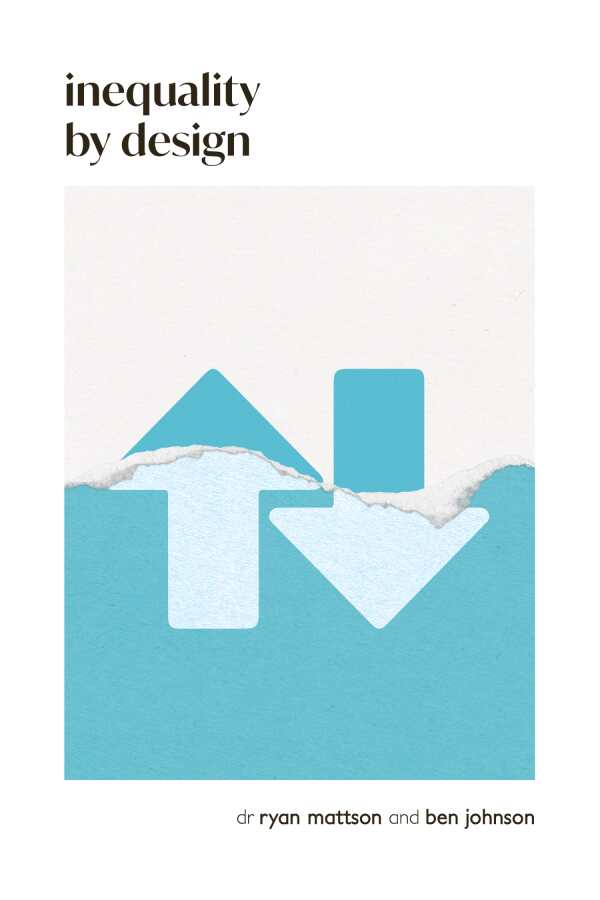Inequality by Design
How a Rigged Economy Fractures America and What We Can Do About It
Inequality by Design is a ranging political science study that recommends means of effecting socioeconomic change.
Ryan Mattson and Ben Johnson’s illuminating social science book Inequality by Design critiques income and class inequalities in the US.
Asserting that “structural macroeconomic” policies led to rising inequality based on the designs of “politicians, policymakers, CEOs, and lobbyists,” the book asserts that the top 1 percent of Americans take income from low- and middle-income Americans. Its extensive coverage of economic theories and practices in the United States is supported by references to noted economists, surveys, and economic data. Using hypothetical and anecdotal scenarios to amplify its points, including bookending stories about three Americans from different socioeconomic backgrounds across time, it argues for a path forward from the status quo.
Equal parts educational guide and policy argument, the book names multiple sources of economic inequality, including the widening gap between income levels and the gross domestic product (GDP). Tax policies, corporate stock buybacks benefiting the wealthy, and the consolidation of the banking sector after the 1999 repeal of the Glass–Steagall Act are among the topics it covers. Indeed, its overview of economic policies and theories is generous: Individual chapters address key economic factors including housing, taxes, education, and technology. However, some complex concepts are covered sans full context or sufficient explanations, holding lay readers at a distance. Indeed, the book presupposes basic familiarity with its premises to its general detriment.
Included throughout are recommendations for effecting change, geared toward both individuals and policy groups. The book encourages grassroots efforts to address housing affordability, for example, and references the decision of the town council of Smyrna, Delaware, to adopt a village community model to double the number of available housing units. Elsewhere, it asserts that the business cooperative model is a “healthier form of capitalism” and holds up the Mondragón Cooperative Corporation in Spain as an example.
The prose is straightforward but unvarying, and some clichés appear. The book issues broad statements and favors like-minded figures and analyses; there is limited engagement with counterarguments, and the book is often dismissive of perceived opponents, as when it mentions, then disregards, the perspectives of economist Simon Kuznets. At such moments, it is less than persuasive. Further, the book is inconsistent with its supporting references: Some arguments, as with the discussion of the housing market, are supported by official data (sometimes overwhelming in volume); other topics, as with higher education and student loan debt, are handled via sweeping assertions sans official support.
The foundational statistics presented in the book’s early chapters are supplemented by visual charts and graphs whose fluctuating lines illustrate shifts and trends in income disparities over time, though some are hard to read, and others are redundant. Out-of-place cultural references to Star Trek and Lord of the Rings detract from the seriousness of the book’s messages. Still, it does an able job of raising awareness regarding flawed economic policies in the US, and its conclusion, in which three scenarios are imagined (“negative reconstruction,” “dystopian,” and “positive reconstruction”), are sobering.
The sometimes grim social science survey Inequality by Design concerns socioeconomic inequalities in the US and what might be done to upend them.
Reviewed by
Katy Keffer
Disclosure: This article is not an endorsement, but a review. The publisher of this book provided free copies of the book and paid a small fee to have their book reviewed by a professional reviewer. Foreword Reviews and Clarion Reviews make no guarantee that the publisher will receive a positive review. Foreword Magazine, Inc. is disclosing this in accordance with the Federal Trade Commission’s 16 CFR, Part 255.

